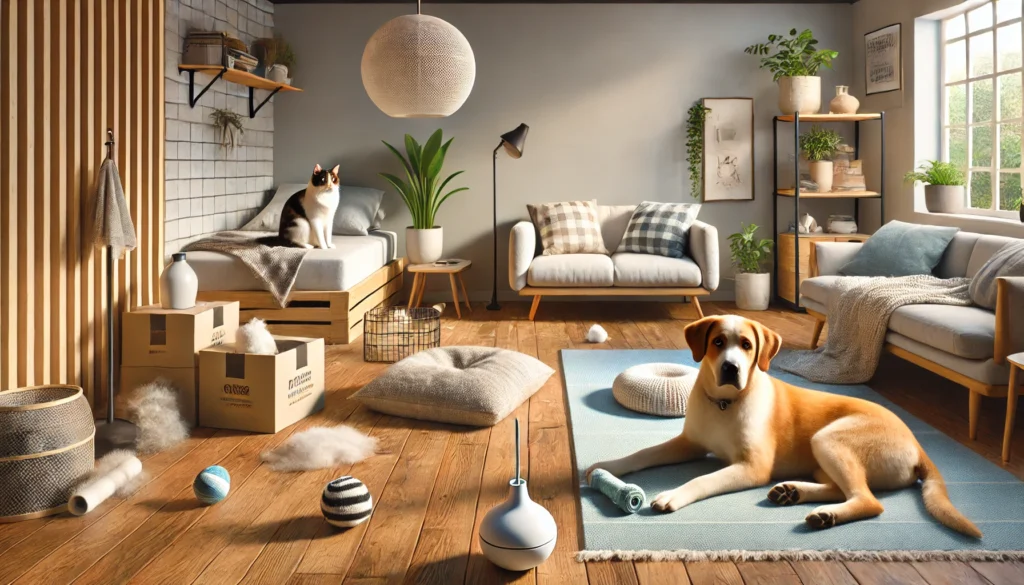Changes in the home — whether it’s moving furniture, adding a new family member, or renovating a room — can be overwhelming for pets. Dogs and cats are creatures of habit, and even minor disruptions can cause stress, anxiety, or behavioral changes.
Here’s how to help your indoor pet feel safe and calm during transitions in their living space.
Prepare in Advance
Whenever possible, prepare your pet before the change occurs.
- Move furniture gradually rather than all at once.
- Introduce new items slowly and allow your pet to sniff and explore them.
- Use familiar words or routines around new experiences to reduce uncertainty.
Preparation reduces fear and builds trust during transitions.
Maintain a Routine
Consistency is comforting.
- Keep feeding, play, and walk times the same, even if the environment changes.
- Stick to normal bedtime routines and daily activities.
- Use verbal cues and praise to guide them through the day.
Routine gives your pet something familiar to rely on.
Set Up a Safe Space
Provide a consistent, quiet area for your pet to retreat to when things feel unfamiliar.
- Choose a low-traffic room or a cozy corner with their bed, toys, and water.
- Avoid moving their resting space during the change, if possible.
- Allow them to access this space freely throughout the transition.
Safe zones help pets self-regulate and relax.
Use Calming Aids if Necessary
If your pet is prone to stress, calming tools can make a difference.
- Try pheromone diffusers like Feliway (cats) or Adaptil (dogs).
- Use anxiety wraps or calming shirts if they’re used to wearing them.
- Play relaxing music to drown out unfamiliar sounds.
Always supervise when introducing any new product or accessory.
Introduce Changes Gradually
Slow introductions are easier for pets to handle.
- Bring in one new item or person at a time, and give your pet space to adjust.
- Use positive reinforcement — praise, treats, or toys — during exposure.
- Let your pet lead the pace of engagement.
This builds positive associations and reduces fear.
Supervise Interactions With New People or Animals
If a new roommate, baby, or pet is entering the home:
- Allow your pet to observe at a distance first.
- Offer treats when they remain calm near the new arrival.
- Monitor body language closely — don’t force interactions.
Respecting boundaries helps create long-term harmony.
Avoid Punishment During Adjustment Periods
Pets may act out under stress. Be patient.
- Don’t scold for accidents, barking, or hiding during big changes.
- Redirect behavior calmly and offer better alternatives.
- Celebrate calm, curious behavior instead.
Positive responses help pets feel safe and supported.
Reinforce Familiar Smells
Smell is grounding for pets.
- Use unwashed blankets, toys, or beds to provide comfort.
- If you’re changing flooring or furniture, keep one piece with your pet’s scent.
Familiar smells help reestablish a sense of place.
Be Present and Reassuring
Sometimes all your pet needs is your calm presence.
- Sit with them, speak softly, and offer gentle pets.
- Avoid creating more excitement — stay relaxed and predictable.
- Let them come to you when they’re ready.
Your energy sets the tone for your pet’s comfort.
Helping your pet through household changes isn’t about perfection — it’s about patience, consistency, and love. With thoughtful planning and a calm approach, you’ll give your pet the confidence to adapt and thrive in any environment.






